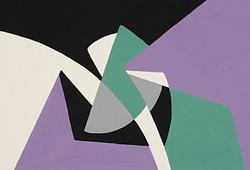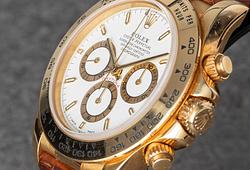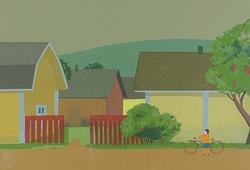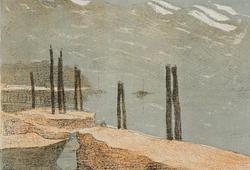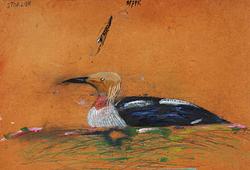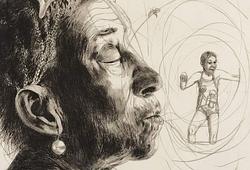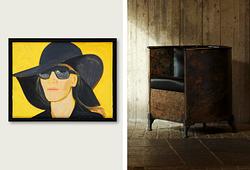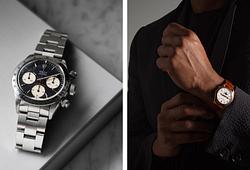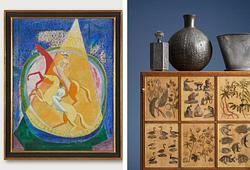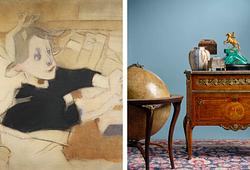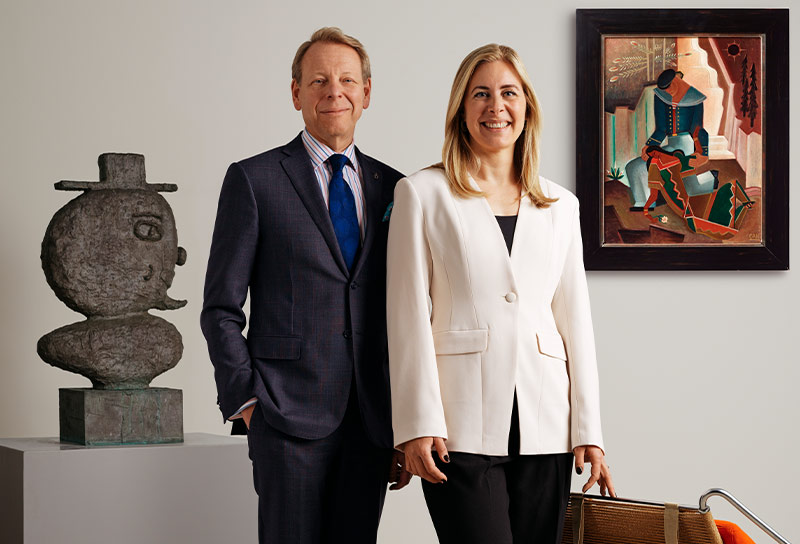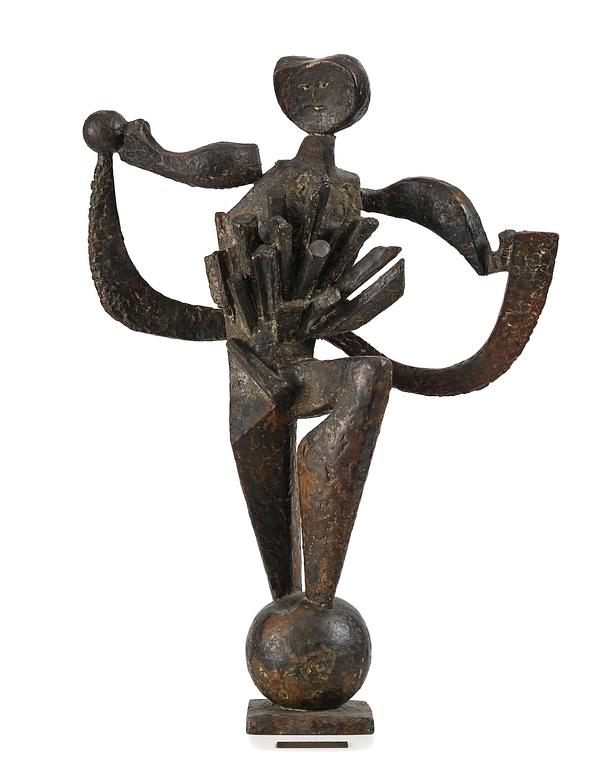Eric Grate
"Dansande fetisch".
Signed Eric Grate, dated L.III (1953). Foundry marked Herman Bergman. Patinated bronze. Height 90 cm. Height including base 135 cm. Width approximately 63 cm, depth approximately 21 cm.
Provenance
The sculpture was previously located at Restaurant Stadskällaren in Östersund and Sara Hotel Strand in Sundsvall. Bukowski Auctions, Modern Art + Design 604, 21 November 2017, cat. no. 221. Acquired at the above auction.
Literature
Pontus Grate and Ragnar von Holten, "Eric Grate", SAKs Allmänna publikation LXXXVII, illustrated as a drawing and mentioned p. 52, mentioned p. 106 and illustrated fullpage p. 107.
More information
Eric Grate had early on, in the late 1920s, joined the Paris surrealist avant-garde. After returning to Sweden in 1933, Grate briefly returned to a more figurative visual language, but in the mid-1940s, he resumed creating works with visionary and surrealistic elements. In the early 1950s, he created some of his finest sculptures.
Artist
Eric Grates idiosyncratic world of images always invites exploration and wandering within the imagination. While he respects the the earths natural forms, he sometimes "plays with god", manipulating and playing with nature to create new surprising objects which we recognise but simultaneously dont recall. He borrows fragments from nature and uses his endless imagination to create art in his unique way. His visual language emualtes an aura of abstract surrealism derived from "object trouvés". Grate was inspired by natures radiance and its different forms. Stones, roots, insects, bones, all were transformed into sculptures, particularly the insect world was a source of great inspiration for Grates. During the 1960s, beach, hull, and bones were particularly the starting points for his sculptures. He created numerous official artworks.
Grate began his academic trips after finishing his studies at Royal Swedish Academy of Fine Arts from 1979-20, where he travelled to Italy and Greece, filling his sketchbooks with studies of insects, plants, unique architecture, sculpture, and ceramics. He spent a longer period between 1924 and 1933 in Paris, a formative period where he was one of the few Swedish artists who was associated with the avante garde; we got in contact with none other than the surrealists Jean Arp, Paul Eluard, and Tristan Tzara. Grate is seen by many as one of Sweden's most influential sculptors during the 1900s.
Read more



